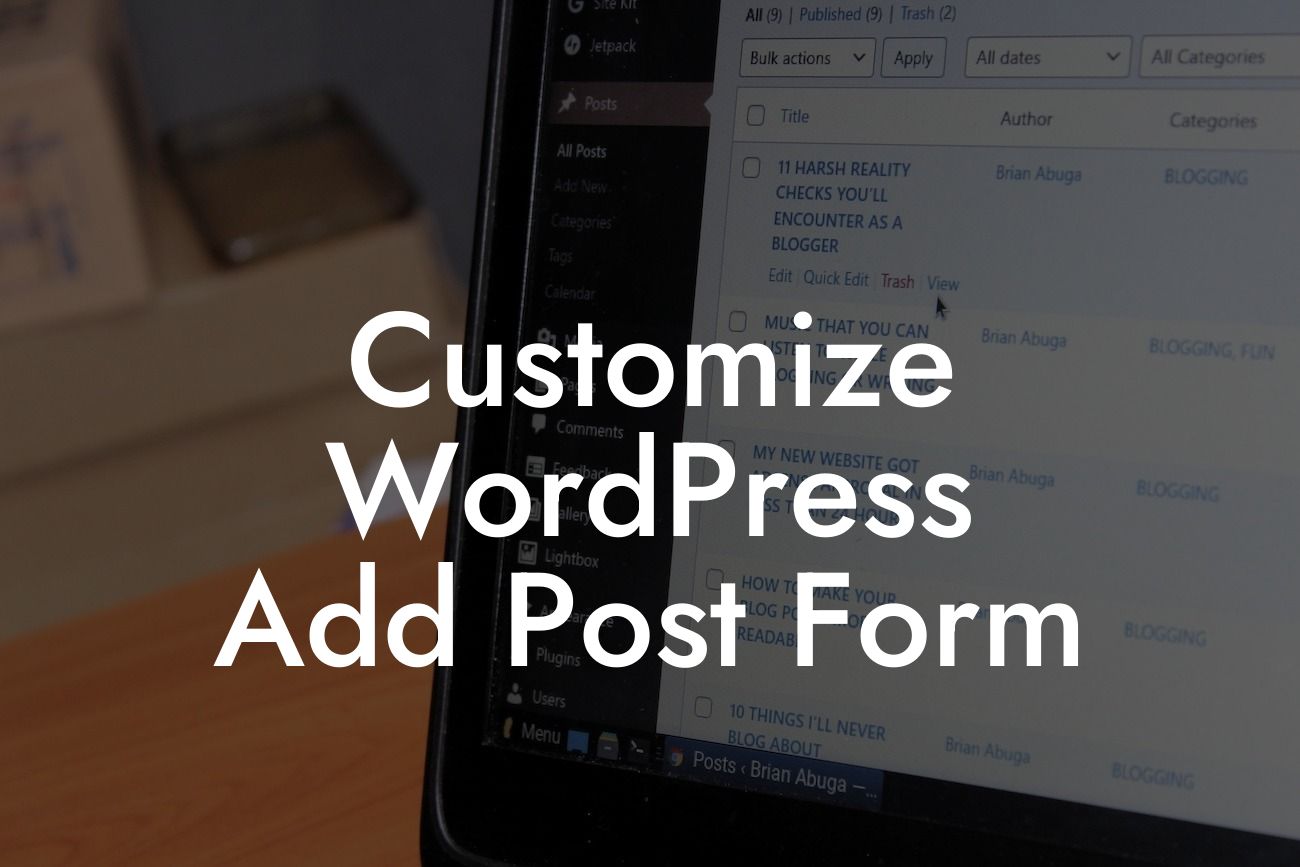Are you tired of the standard WordPress add post form that limits your flexibility and creativity? If you're a small business owner or entrepreneur looking to make your mark online, customization is key. In this article, we will explore how you can easily customize the WordPress add post form to suit your unique requirements. Say goodbye to cookie-cutter solutions and embrace the power to create extraordinary posts. Let's dive in!
Customizing the WordPress add post form allows you to elevate your online presence and supercharge your success. Here are several ways you can achieve this:
1. Adding Custom Fields:
With the help of plugins like Advanced Custom Fields, you can effortlessly incorporate additional fields into your post form. Whether you need a specific section for testimonials, product details, or event information, custom fields offer endless possibilities.
2. Modifying the Layout:
Looking For a Custom QuickBook Integration?
By understanding the structure of the add post form, you can easily modify its layout using HTML and CSS. Whether you want to reposition or resize elements, this flexibility allows you to create a visually appealing and user-friendly form that aligns with your brand.
3. Implementing Conditional Logic:
Want to show or hide specific fields based on user selections? Conditional logic plugins like Conditional Fields for Contact Form 7 enable you to create dynamic post forms. For instance, if you're offering different services, you can display relevant fields based on what users choose.
4. Integrating Custom Taxonomies:
Often, the default WordPress add post form lacks the ability to assign custom taxonomies to your posts. Custom taxonomies help organize your content better and improve searchability. Plugins like Custom Taxonomies Menu Widget allow you to effortlessly add taxonomies to the form.
Customize Wordpress Add Post Form Example:
Let's take the example of a travel blog. By customizing the WordPress add post form, you can add fields for location, travel tips, and recommendations. You can also modify the layout to showcase an interactive map and allow users to upload their own images. Finally, integrate custom taxonomies for destinations, trip types, and more. The result? A personalized and engaging travel blog that sets you apart from the competition.
Congratulations! You now have the knowledge and tools to customize the WordPress add post form. Elevate your online presence by incorporating custom fields, modifying the layout, implementing conditional logic, and integrating custom taxonomies. Don't settle for a cookie-cutter solution when you can create something extraordinary. Make sure to share this article with fellow entrepreneurs and explore other guides on DamnWoo. And don't forget to try out our awesome plugins to further enhance your WordPress experience. Stay extraordinary!













